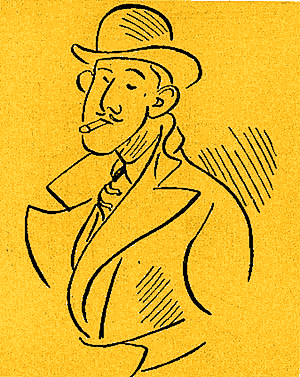Erich Kästner and Walter Trier (illustrator), Emil and the Detectives (1929; translation by Eileen Hall 1959; Puffin 1984)
My virtual To-Be-Read pile includes innumerable children’s literature classics. Emil and the Detectives is one of them. I have somehow come to own a copy of it, and it seemed like the perfect read after the rigours of Edward Said’s On Late Style. I knew almost nothing about it. And of course, not being a children’s literature scholar, I still don’t know what its historical claim to fame is, but I did enjoy it, and had a complex enough response that I felt compelled to do a little background reading
First published in Germany in 1929, it evidently broke new ground by telling a tale set in recognisable current reality, mainly in Berlin, with a mainly realistic story. Emil, who lives with his mother in the tiny village of Neustadt, sets out by train to visit his grandmother and aunt and family in Berlin. His mother gives him the enormous sum of seven pounds (in Eileen Hall’s 1959 translation the money is British), one pound for spending money, the rest to help Grandma out. The money is stolen, and Emil has to catch the thief and retrieve the money. He is helped by an ever expanding gang of Berlin boys, and one girl. It’s not really a spoiler to tell you that they are successful.
The book was a delight to this 71 year old, and the note on my yellowing copy’s opening page is almost certainly accurate:
It is a book everyone reads with pleasure. Forward readers of eight could tackle it, while those in their early teens still enjoy it without wanting to disguise the fact.
The squabbling among the boys, their awe in the presence of the only girl, the presence of a kindly journalist named Mr Kästner, the acknowledgement to the smallest boy whose undramatic contribution to the project was nonetheless heroic, the attention paid throughout to tiny practical details, the evocation of the city of Berlin – nostalgic now but no doubt fresh and new then: so much to love.
The thing that sent me to Wikipedia was this: I became uneasy in the climactic scenes leading up to the villain’s capture. Some of this is described from his point of view:
Mr Grundeis found himself completely surrounded. He looked about in amazement, Boys swarmed round him, all laughing and talking among themselves, jostling each other, yet somehow always keeping up with him, Some of them stared at him so hard that he hardly knew where to look.
Then – whizz – a ball flew past his head. He did not like that, and tried to move more quickly; so did the boys, and he remained surrounded. Then he tried to take them by surprise by turning abruptly to go down a side street, but he could not get through the mass of children which seemed to stream across his path whichever way he turned.

And it goes on. Mr Grundeis threatens to call the police, but the boys call his bluff. And so on, until there’s a violent confrontation in a bank, and the boys convince the tellers and police (who do eventually turn up) that the man is indeed a thief. I can’t be the only one to be made uneasy by this scene of a cheerful mob of adolescent boys harassing a solitary man, especially in late 1920s Berlin. It’s possible that Mr Grundeis has some of the cultural markers for ‘Jew’. He is certainly described in more detail than any other character. He wears a bowler hat, and has ‘a long face, with a small black moustache and a lot of wrinkles around his mouth’. In addition, ‘His ears were thin and stuck out from his head.’
So I was uneasy. I did go to Wikipedia, where I learned that this is the only pre-1945 book by Kästner that wasn’t censored by the Nazis, so I’m reasonably assured that this isn’t deliberate anti-semitism. But I’m putting it out there as a question to people who know more about the history of this book than I do. Does this lovely book about youthful solidarity and power contain a coded version of the antisemitism that Hitler and the Nazis built on? Is it possible for the same story to make one think of the recent school students’ demonstrations for the environment, and in the same moment to remember that boy in Cabaret singing so sweetly, ‘The future belongs to me’? Or am I being hyper-vigilant in this age of assertive identity politics.


